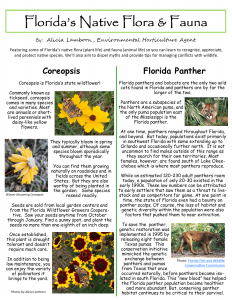Featuring Florida’s native flora (plant life) and fauna (animal life) so you can learn to recognize, appreciate, and protect native species.

 0
0
Featuring Florida’s native flora (plant life) and fauna (animal life) so you can learn to recognize, appreciate, and protect native species.

 0
0
![]()
Posted: January 10, 2022